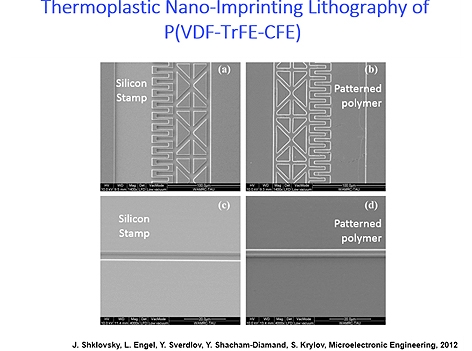MEMS are usually produced from silicon but the TAU researchers - engineering doctoral candidates Leeya Engel and Jenny Shklovsky - have created a novel micro-printing process to create a flexible and non-toxic organic polymer suitable for use with MEMS. It is claimed the resulting components can be more comfortably and safely used in the human body and expend less energy.
MEMS have applications in consumer electronics, cars, and medicine. MEMS sensors, accelerometers that orient smartphone screens vertically or horizontally, gather information from their surroundings by converting movement or chemical signals into electrical signals. MEMS actuators execute commands by converting electrical signals into movement.
Both, however, rely on micro- and nano-sized components, such as membranes, either to measure or produce the necessary movement.
MEMS membranes, like other MEMS components, can be fabricated from silicon using processes used by semiconductor industry. TAU’s new printing process, published in Microelectronic Engineering and presented at the AVS 59th International Symposium in Tampa, Florida, yields rubbery, paper-thin membranes made of a particular kind of organic polymer.
Fabrication
Engel told The Engineer via email that the printing process uses a silicon stamp to pattern a polymer that is thermoplastic. The stamp is created using microfabrication technologies borrowed from the integrated circuit industry.
Engel said, ‘Unfortunately, no such established technologies exist when it comes to working with polymers at low scales.
‘We perform a special surface treatment on the silicon stamp before the imprint to make it less “sticky”. This allows us to remove the stamp from the polymer when we are finished applying the pressure and heat required to transfer the pattern from the stamp to the polymer substrate.
‘We tailored the heat and pressure and length of time they are applied to the particular properties of the polymer we are interested in focusing on for sensor and actuator application. Our results show high resolution patterning (features that are in the order of a millionth of a meter).’
Applications
This material has specific properties that make it attractive for micro- and nano-scale sensors and actuators. Crucially, the polymer membranes are more suitable for implantation in the human body than their silicon counterparts, due in part to their flexibility relative to conventional materials.
The flexibility of the polymer membranes could help make MEMS sensors more sensitive and MEMS motors more energy efficient. They could be key to better cameras and smartphones with a longer battery life.
In the medical device sector bionic limbs that can respond to stimuli from an amputee’s nervous system and the external environment, plus prosthetic bladders that regulate urination for people paralyzed below the waist are already in use. Switching to MEMS made with the polymer membranes could help make such prosthetics more comfortable, efficient, and safer for use on or inside the body.
‘The use of new, soft materials in micro devices stretches both the imagination and the limits of technology, but introducing polymer MEMS to industry can only be realised with the development of printing technologies that allow for low cost mass production,’ Engel said in a statement.
The team’s new polymer membranes can already be quickly and inexpensively produced. The next step is to use the printing process to make functional sensors and actuators almost entirely out of the polymer at the micro- and nano-scales. Such flexible machines could be put to use in artificial muscles and flexible screens that can be rolled up.







Project to investigate hybrid approach to titanium manufacturing
What is this a hybrid of? Superplastic forming tends to be performed slowly as otherwise the behaviour is the hot creep that typifies hot...